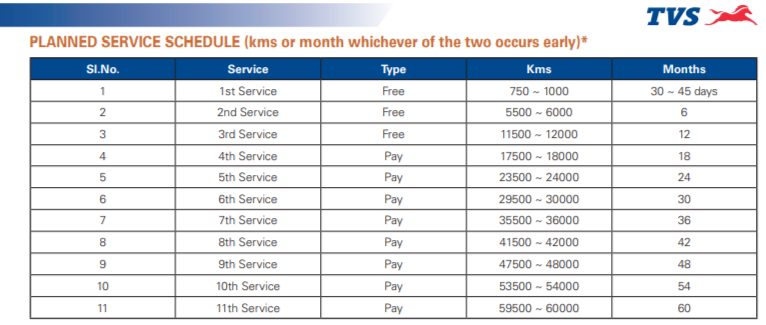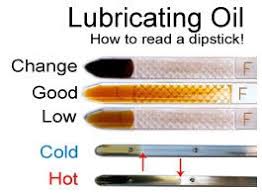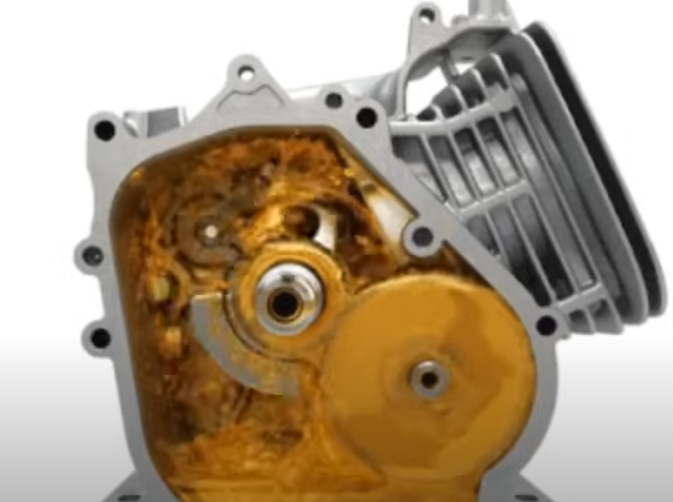The interval for changing engine oil in a bike in India depends on the type of engine, the oil used, and the manufacturer’s recommendations. Here are general guidelines based on typical scenarios:
BS6 Scoters & Motorcycles UPTO 150CC
- 1st free service: 750–1,000 km or 15–30 days
- 2nd free service: 5,500–6,000 km or 165–180 days
- 3rd free service: 11,500–12,000 km or 350–365 days
- Paid service: Every 6,000 km or 180 days
You must follow the owner manual recommended schdeule.

BS4 Scooters & Motorcycles
BS4 ALL SCOOTER AND MOTORCYCLE UPTO 150CC
| Kms* | Days* | |
|---|---|---|
| 1st Free Service | 750kms – 1000kms | 15 – 30 days |
| 2nd Free Service | 3500kms – 4000kms | 105 – 120 days |
| 3rd Free Service | 7500kms – 8000kms | 225 – 240 days |
| 4th Free Service | 11500kms – 12000kms | 350 – 365 days |
| PAID Service | 15000kms – 16000kms | 465 – 480 days |
| PAID Service | 19500kms – 20000kms | 585 – 600 days |
| PAID Service | 23500kms – 24000kms | 705 – 720 days |
| PAID Service | 27500kms – 28000kms | 825 – 840 days |
| PAID Service | 31500kms – 32000kms | 945 – 960 days |
Gneral rule type of oil Mineral-based oil should be changed every 2,000 km or 2 months, semi-synthetic oil every 3,000–5,000 km 4-6 months and fully synthetic oil every 7,000–10,000 km at elast twice in a year.
Pro Tip: check & topup in middle of interval
Signs that engine oil needs to be replaced immediately
- The oil is thin and dark or black in colour
- Decrease in volume of engine oil
- High engine temperature
- Harsh engine sound
Check Oil Quality & Quanity
| The oil is thin and dark or black in colour | repeated exposure to engine combustion causes it to turn black replace it as soon as possible as it will lead to rapid engine wear. |
| Decrease in volume of engine oil | oil tends to decrease due to prolonged and intense engine use. oil leaks |
| High engine temperature | Deteriorating oil condition also leads to reduced thermal conductivity |
| Harsh engine sound | when you change gears or rev the engine |
| general rule | every 3,000 to 5,000 kilometre (semi -synthetic) |
| high-traffic areas Not count KMs | where the bike may not be moving yet there is continuous running of the engine and lubricant circulation. |
| oil type | ideal change apporx* conservative approach | manufacture says* |
| Mineral oil: | 2500-3000KM, | 3000km |
| semi synthetic | 3500-4000KM | 5000- 6000km |
| fully synthetic | 5000-5500 | 7000- 10000KM |
IS topup required for engine oil
If dipstick / side view tells you that your oil level is low, you should top up your engine oil as soon as possible.
If you don’t ride your bike often, you should change the oil at least twice a year. (just advice)
1. For Regular Bikes (Commuter Models)
- Interval: Every 3,000 to 5,000 kilometers.
- Reason: These bikes typically use mineral or semi-synthetic oils, which require more frequent changes due to their shorter lifespan.
2. For Performance Bikes
- Interval: Every 5,000 to 7,000 kilometers.
- Reason: High-performance bikes often use fully synthetic oils, which last longer and maintain their viscosity under high temperatures.
3. For Adventure and Touring Bikes
- Interval: 6,000 to 10,000 kilometers.
- Reason: These bikes usually run on premium synthetic oils designed for extended use and extreme conditions.
4. Check Manufacturer’s Recommendations
Always refer to the owner’s manual for the manufacturer’s specific recommendation. Some bikes might need an oil change earlier, especially during the initial running-in period (first 1,000-2,000 km).
5. Other Factors to Consider
- Riding Conditions: Riding in dusty, hot, or stop-and-go traffic can degrade engine oil faster, necessitating more frequent changes.
- Oil Quality: The better the oil, the longer it will last. Fully synthetic oils typically outlast mineral oils.
- Maintenance Habits: Regular maintenance, including checking oil levels and quality, helps determine if an earlier change is required.
The frequency of motorcycle engine oil changes depends on several factors, including the type of oil used and the type of engine in your motorcycle. Regular oil changes are essential for maintaining engine performance, preventing wear, and ensuring smooth operation. Below, I’ve outlined general guidelines based on oil type (mineral, semi-synthetic, and synthetic) and engine type (air-cooled, liquid-cooled, 4-stroke, 2-stroke).

Most experts recommend 4000Km or 4-5 months. (TVS says, every 3 months, honda says every 6 monhts bajaj says every 5000 kms or 6 monhts yamaha says 3000/4000/5000 based on vehicles)
but some user manuals recommeds 6 months or 6000KM based their engine ex: tvs raider 125cc bs6 engine.
Some quick method to know engine oil change frequency, but go with manufcaurer user manual
Check Engine Oil level at half life of engine oil. if it close to the engine lower mark topup for better engine performance. engine oil viscocty degrage over the time.
| Every day ride | Monthly | KM to changed engine oil | days |
| daily below 10KM | 300 | 1800KM | 6 months |
| daily 20-40KM | 600-1200KM | 2400KM-3200KM | 3-6months |
| daily 50-100KM | 1500-3000KM | 3500KM | |
| daily running below 30KM | 3000-3500KM | ||
| daily 31-60KM | 4000-5000KM | ||
| daily 60KM+ | 4500-6000KM | ||
Engine Oil Change Frequency by Oil Type, Engine Type, and Engine CC Approximate*
| Engine CC | Mineral Oil | Semi-Synthetic Oil | Full Synthetic Oil |
|---|---|---|---|
| Up to 150cc | Every 1,000 – 2,000 km (620 – 1,240 miles) | Every 2,000 – 3,500 km (1,240 – 2,175 miles) | Every 3,000 – 4,500 km (1,860 – 2,800 miles) |
| 151cc – 300cc | Every 2,000 – 3,000 km (1,240 – 1,860 miles) | Every 3,000 – 4,500 km (1,860 – 2,800 miles) | Every 4,500 – 6,000 km (2,800 – 3,700 miles) |
| 301cc – 600cc | Every 3,000 – 4,000 km (1,860 – 2,480 miles) | Every 4,000 – 5,500 km (2,480 – 3,400 miles) | Every 6,000 – 8,000 km (3,700 – 5,000 miles) |
| 601cc – 1000cc | Every 4,000 – 5,000 km (2,480 – 3,100 miles) | Every 5,000 – 6,500 km (3,100 – 4,000 miles) | Every 7,000 – 10,000 km (4,350 – 6,200 miles) |
| 1001cc – 1500cc | Every 5,000 – 6,000 km (3,100 – 3,700 miles) | Every 6,000 – 8,000 km (3,700 – 5,000 miles) | Every 8,000 – 12,000 km (5,000 – 7,500 miles) |
| Over 1500cc | Every 6,000 – 7,500 km (3,700 – 4,600 miles) | Every 7,000 – 9,000 km (4,350 – 5,600 miles) | Every 10,000 – 15,000 km (6,200 – 9,300 miles) |
Engine CC (Engine Capacity):
- Smaller Engines (Up to 150cc): Small engines are typically more rev-happy, meaning they run at higher RPMs and generate more heat relative to their size. This leads to faster oil degradation, requiring more frequent oil changes.
- Medium Engines (151cc – 600cc): These engines offer a balance between power and oil durability. With appropriate oil types, they can run longer between changes but still require attention to oil health for optimal performance.
- Larger Engines (Over 600cc): Larger engines, especially 4-stroke engines, are more efficient and can run longer between oil changes. They operate at lower RPMs, generating less heat, which means the oil can last longer.
Always for service manual for warranty applicabbility
They test in different enviorments for engine oil degradation, heat conditions etc. if you want above that you need to be an expern or take risk of vehicle engine.
how to decide engine oil viscocity grade for motorcycle
Environment and engine cooling system and some factors affects this read more here..
Engine Oil Change Frequency by Oil Type
- Mineral Oil (Conventional Oil):
- Recommended Change Interval: Every 1,000 to 3,000 kilometers (620 to 1,860 miles).
- Why?: Mineral oil is the most basic form of oil and breaks down quicker than synthetic oils. It provides less protection against high heat and wear, so it needs to be changed more frequently.
- Best For: Older bikes, smaller engines, or motorcycles that are used for short trips with frequent stop-and-go riding.
- Semi-Synthetic Oil (Blended Oil):
- Recommended Change Interval: Every 4,000 to 6,000 kilometers (2,500 to 3,700 miles).
- Why?: Semi-synthetic oil combines mineral and synthetic oils, offering better heat resistance and lubrication properties. It lasts longer than mineral oil and offers more protection for the engine.
- Best For: Modern motorcycles that use higher performance engines but aren’t subjected to extreme riding conditions.
- Full Synthetic Oil:
- Recommended Change Interval: Every 6,000 to 10,000 kilometers (3,700 to 6,200 miles).
- Why?: Full synthetic oil offers superior protection and lubrication under high temperatures, extended performance, and better fuel efficiency. It lasts longer than both mineral and semi-synthetic oils.
- Best For: High-performance motorcycles, especially those with modern engines or for long-distance touring, track bikes, or those operating in high temperatures.
Engine Oil Change Frequency by Engine Type
- 4-Stroke Engines:
- Recommended Change Interval: Every 5,000 to 10,000 kilometers (3,100 to 6,200 miles), depending on the oil type.
- Why?: 4-stroke engines are more efficient at dispersing oil and heat and are less prone to the rapid breakdown of oil compared to 2-stroke engines. A full synthetic oil in a 4-stroke engine can last up to 10,000 kilometers.
- Factors to Consider: If the bike is used for heavy-duty riding (off-road, racing, or long trips), change the oil more frequently.
- 2-Stroke Engines:
- Recommended Change Interval: Every 1,000 to 3,000 kilometers (620 to 1,860 miles), or as often as every 20 hours of riding.
- Why?: 2-stroke engines burn oil along with the fuel in the combustion chamber, so the oil tends to degrade faster. As a result, more frequent oil changes are necessary to prevent engine wear and keep the engine running cleanly.
- Factors to Consider: 2-stroke engines, commonly found in dirt bikes, scooters, and off-road motorcycles, require more frequent maintenance due to their higher exhaust emissions and oil consumption.
- Air-Cooled Engines:
- Recommended Change Interval: Every 3,000 to 5,000 kilometers (1,860 to 3,100 miles), depending on oil type.
- Why?: Air-cooled engines operate at higher temperatures than liquid-cooled engines, which can cause the oil to break down faster. Frequent oil changes are essential to prevent engine damage.
- Factors to Consider: If you ride in hot climates or under heavy load (high speeds or off-road), change the oil more frequently.
- Liquid-Cooled Engines:
- Recommended Change Interval: Every 5,000 to 8,000 kilometers (3,100 to 5,000 miles), depending on oil type.
- Why?: Liquid-cooled engines maintain a more consistent temperature, reducing the strain on the oil. However, it’s still important to follow the manufacturer’s recommendations for oil changes.
- Factors to Consider: The type of riding (e.g., city commuting or highway) will affect the oil change schedule.
Additional Factors to Consider
- Riding Style:
- Frequent stop-and-go riding, aggressive acceleration, or riding at high speeds may increase the need for more frequent oil changes, even with synthetic oil.
- Climate and Temperature:
- In hot climates, or if your bike is often ridden in high temperatures (e.g., in traffic), the oil will degrade faster, requiring more frequent changes.
- Motorcycle Type and Purpose:
- Touring Motorcycles: If your bike is used for long-distance touring, synthetic oil and less frequent changes are typically acceptable.
- Dirt Bikes or Off-Road Motorcycles: These bikes often require more frequent oil changes due to harsh riding conditions (dust, mud, and high RPMs).
- Sport Bikes: Sport-oriented motorcycles may also need more frequent oil changes, especially if they are ridden aggressively.
Summary Chart: Oil Change Intervals Based on Oil and Engine Type
| Oil Type / Engine Type | Mineral Oil | Semi-Synthetic Oil | Full Synthetic Oil |
|---|---|---|---|
| 4-Stroke Engine | 1,000 – 3,000 km | 4,000 – 6,000 km | 6,000 – 10,000 km |
| 2-Stroke Engine | 1,000 – 3,000 km | N/A | N/A |
| Air-Cooled Engine | 3,000 – 5,000 km | 4,000 – 6,000 km | 6,000 – 8,000 km |
| Liquid-Cooled Engine | 5,000 – 8,000 km | 6,000 – 8,000 km | 6,000 – 10,000 km |
can i use synthetic oil instead of conventional
yes,
full synthetic motor oils typically use the highest quality base oil combination as a starting point. Synthetic blend motor oils will typically be either a blend of high-quality and lower-quality conventional base oils or all high-quality (higher than conventional) base oils. But the synthetic base oil is only half the story. The correct blend of additives must go into the mix to create the oil.
Synthetic Oil vs. Conventional Oil
| Aspect | Synthetic Oil | Conventional Oil |
|---|---|---|
| Performance | Superior performance under extreme temperatures. | Performance can degrade in extreme conditions. |
| Engine Protection | Provides excellent wear protection and reduces friction. | Offers basic protection, less effective under stress. |
| Oil Change Interval | Longer intervals (up to 7,000–10,000 km). | Shorter intervals (3,000–4,000 km). |
| Viscosity Stability | Maintains viscosity across a wide temperature range. | Viscosity changes more significantly with temperature. |
| Fuel Efficiency | Improves fuel economy by reducing engine friction. | Less effective in improving fuel efficiency. |
| Cold Start Performance | Flows easily at low temperatures, reducing startup wear. | Slower flow in cold conditions, increasing wear risk. |
| Resistance to Oxidation | High resistance, leading to slower oil degradation. | Prone to quicker breakdown and sludge formation. |
| Price | More expensive (₹400–₹800 per liter). | Less expensive (₹250–₹400 per liter). |
| Suitability for Performance Bikes | Ideal for high-performance or long-distance rides. | Better for standard commuter usage. |
| Environmental Impact | Requires fewer oil changes, reducing waste. | More frequent changes increase environmental impact. |